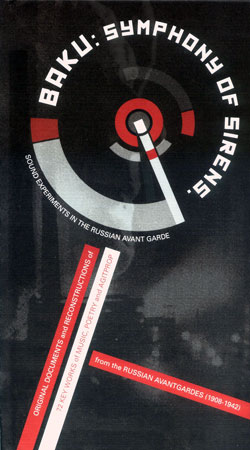
Izvrsna knjiga o zvukovnim eksperimentima ruskih avangardista. Genijalni Hljebnikov, primjerice, vidio je u radiju Velikog Vrača, zamišljao je ne samo radio-knjige i planetarni prijenos zvukova, nego i radijski prijenos okusa i mirisa: ljudi će piti vodu a imati dojam da piju vino, usred proljeća emitirat će se miris snijega itd.
Razne ulomke možete ovdje i čuti.
Baku: Symphony of Sirens: Sound Experiments in The Russian Avant-Garde. Original Documents and Reconstructions of 72 Key Works of Music, Poetry and Agitprop from the Russian Avantgardes (1908-1942)
A comprehensive overview of the complexity and breadth of the many early 20th-century Russian avantgarde movements, followed by detailed notes and contexts for the individual recordings - including summary biographies of the main actors; additional work notes about the process of the extraordinary Baku reconstruction; a bibliography, rare photographs, web research links, artwork, facsimiles of contemporary documents, a comparative timeline of European and Russian Avantgardes and the first English translation of an article by Avraamov about the symphony. This is a definitive library collection, some seven years in the making and possibly our most important release of recent years.
[edit]Part 1: Reconstructions
In 1922 Arseni Avraamov composed and conducted a visionary public sound event, The Symphony of Sirens, activating the entire port city of Baku: its factory sirens, the ships horns of the entire Caspian flotilla, two batteries of artillery, several full infantry regiments, trucks, seaplanes, 25 steam locomotives, an array of pitched whistles and several massive choirs. Constantly referenced but forever lost, this extraordinary event is here painstakingly reconstructed and spatialised to approximate the original experience. Plus 39 other priceless sound works, including the legendary Victory over the Sun and other lost documents of Kazimir Malevich, Dziga Vertov, Nikolai Foregger & his Orchestra of Noises, Sergei Prokofiev, El Lissitsky, Velimir Khlebnikov, Ivan Ignatiev & The Ego Futurist Group, Mikhail Matyushin, Alexei Kruchenykh, Georgi Yakoulov, Konstantin Melnikov, Igor Severyanin, Vasilisk Gnedov, Vladimir Kasyanov & The Futurist Circle, David Burliuk, Elena Guro, Olga Rozanova, H2SO4 Group, Simon Chikovani, The Nothingists, Wassily Kandinsky, Daniil Harms, Igor Terentiev, Mikhail Larionov, The Psycho-futurists group, Vasily Kamensky, Varvara Stepanova and Roman Jakobson.
Total duration: 77'30".
[edit]1. Arseny Avraamov – Symphony of Sirens
Public event, Baku, 28'10". MP3
Directed by [Version] – Leopoldo Amigo, Miguel Molina
Production Date – 2003
Published in the audio-book Del Mono Azul al Cuello Blanco (Generalitat Valenciana, 2003) and 2-CD Noises and Whispers in Avant Gardes (UPV-Allegro Records, 2004)
Arseny Avraamov, pseudonym of Arseny Mikhaylovich Krasnokutsky (b. Novocherkassk/Rostov 1886 - d. Moscow 1944), was a composer, music theorist, performance-instigator and commissar for the arts in Narkompros (the People's Commissariat for Education) just after the Revolution, and helped set up Proletkult - encouraging the development of a distinctly proletarian art and literature. As a musician, he was involved in the debates on microtonality and in the 1920s, proposed to the People's Commissar for Education (Lunacharsky) an order to burn all pianos, because he considered the piano to be symbolic of the well-tempered system of tuning (popularised by Bach), which mutilates people's and composers' musical sense. His later experiments with "drawn sound film" (or "synthetic sound") led, in the early 1930s, to the creation of the first synthesised sound recording on film. Some years before, Avraamov, in his article "Upcoming Science of Music and the New Era in the History of Music" (1916) had predicted synthesised music and outlined his point of view on the future of the Art of Music thus: "Knowing the way to record the most complex sound textures by means of a phonograph - after analysis of the curve structure of the sound groove directing the needle of the resonating membrane - one can create synthetically any, even the most fantastic sounds by forming a groove with the appropriate structure of shape and depth". He directed an International Musical Exhibition (Frankfurt) on the new technological advances in music, together with Leon Theremin and other exceptional musicians and researchers. He also investigated the poetic structures of Imaginists Sergei Yesenin and Anatoly Marienhof (book Imazhinisty, 1921). As part of his desire to remind the proletariat of their true role - their power to decide their own history - Avraamov conceived a monumental proletarian musical work for the creation of which he would use only sounds taken directly from factories and machines. To this end, he organised several monumental concerts, which he called Symphony of Sirens [Simfoniya gudkov, Гудковая симфония], inspired by the nocturnal spectacles of Petrograd (May 1918) and by the texts of Gastef and Mayakovsky. He eventually took these concerts to a number of Soviet cities celebrating the anniversaries of the October Revolution: Nizhny Novgorov (1919), Rostov (1921), Baku (1922) and finally Moscow (1923). The most impressive and elaborate of these concerts was held on 7 November 1922 in the harbour of Baku in Azerbaijan. For this, Avraamov worked with choirs thousands strong, foghorns from the entire Caspian flotilla, two artillery batteries, several full infantry regiments, hydroplanes, twenty-five steam locomotives and whistles and all the factory sirens in the city. He also invented a number of portable devices, which he called Steam Whistle Machines for this event, consisting of an ensemble of 20 to 25 sirens tuned to the notes of The Internationale. He conducted the symphony himself from a specially built tower, using signalling flags directed simultaneously toward the oil flotilla, the trains at the station, the shipyards, the transport vehicles and the workers' choirs . Avraamov did not want spectators, but intended the active participation of everybody in the development of the work through their exclamations and singing, all united with the same revolutionary will. Avraamov reflected on the potential of music, and the influence of the sounds that define our environment - their importance and the role they had to fulfil after the October Revolution - an aspect of his thinking which helps us to understand the ultimate meaning of the composition of the Symphony of Sirens:
"Music has, among all the arts, the highest power of social organisation. The most ancient myths prove that mankind is fully aware of that power (...) Collective work, from farming to the military, is inconceivable without songs and music. One may even think that the high degree of organisation in factory work under capitalism might have ended up creating a respectable form of music organisation. However, we had to arrive at the October Revolution to achieve the concept of the Symphony of Sirens. The Capitalist system gives rise to anarchic tendencies. Its fear of seeing workers marching in unity prevents its music being developed in freedom. Every morning, a chaotic industrial roar gags the people. (...) But then the revolution arrived. Suddenly, in the evening - an unforgettable evening - a Red Petersburg was filled with many thousands of sounds: sirens, whistles and alarms. In response, thousands of army lorries crossed the city loaded with soldiers firing their guns in the air. (... ) At that extraordinary moment, the happy chaos should have had the possibility of being redirected by a single power able to replace the songs of alarms with the victorious anthem of The Internationale. The Great October Revolution! - once again, sirens and work in the cannon whole of Russia without a single voice unifying their organisation".
This recording was made close note of taking Avraamov's instructions, originally published in Turkish in Baku's three local newspapers on 6 November 1922, the day before the event:
On the Fifth Anniversary of the October Revolution
On the morning of the Fifth Anniversary, on 7th November, all the ships from Gocasp, Voenflat, and Uzbekcasp, including all small boats and vessels, will gather near the dock of the railway station at 7:00 a.m. All boats will receive written instructions from a group of musicians. After that, they will proceed to occupy the place assigned to them near the customs dock. The destroyer Dostoyny, with the steam whistling machine and the small boats, will be anchored further up, in front of the tower.
- Instructions for the "Symphony of Sirens"
All the above instructions are directed to the high level ranks and for their irrevocable execution under the responsibility of its authorities: military, Azneft, Gocasp, and related educational institutions. All participants must have with them their respective instructions during the celebrations. The master of TSOK is M. Chagin. The organiser of the Symphony of Sirens is Mr. Avraamov.
- At 9:00 a.m., the whole flotilla will be in position. All the mobile machines, local trains, battleships and repaired steam machines will arrive at the same time. The cadets from the courses of the Fourth Regiment, the students from the Azgo Conservatory, and all the professional musicians will be on the dock no later than 8:30 a.m.
- At 10:00 a.m., the troops, the artillery, the machine guns, and the rest of the vehicles will also get into position, following the orders received. Airplanes and hydroplanes will also be ready.
- No later than 10:30, those in charge of making the signals will take their positions at the regional and railway terminals.
- The midday cannon has been cancelled.
- The squad in charge of the fireworks will give the signal to the following vehicles for their approach to the centre with the minimum possible noise: Zykh, Bely Gorod, Bibi, Abot and Babylon.
- The fifth shot will give the signal to the first and second district of the Black Quarter.
- The tenth shot, to the sirens of the commercial offices, of Azneft, and of the docks.
- The fifteenth shot, the districts, planes taking-off. The bells.
- The eighteenth shot, the sirens of the square and the steam machines located there. Simultaneously, the first company of the Military Academy will move from the square to the docks playing the march "Varashavanka".
- All the sirens sound and end at the twenty-fifth cannon shot.
- Pause.
- The triple chord of the sirens will be accompanied by a "Hurrah" from the docks.
- The steam whistling machine will give the final sign.
- "The Internationale" (four times). In the middle, a wind orchestra plays La Marseillese in combination with a choir of automobiles.
- The whole square joins singing in the second repetition.
- At the end of the fourth verse, the cadets and the infantry return to the square where they are greeted with a " Hurrah".
- At the end, a festive and universal choir with all the sirens and alarm signals plays for three minutes accompanied by the bells.
- The signal for the end is given by the steam whistling machine.
- Ceremonial march. Artillery, fleet, vehicles and machine guns receive their signals directly from the conductor on the tower. The red and white flag, is used for the batteries; the blue and yellow, for the sirens; a four-coloured red flag for machine guns, and a red flag for the individual interventions of boats, trains, and the automobile choir. At a signal of the battery, "The Internationale " is repeated twice throughout the final procession. The fire of the engines will have to be stoked for as long as the signals are maintained.
[edit]2. Velimir Khlebnikov – The Radio of the Future
Radio budušcego, radio project, 1921, 3'45". MP3
Directed By [Radiophonic Re-creation] – Leopoldo Amigo, Miguel Molina
Performer [Collaboration] – Pilar Abad
Voice – Ernest Peshkov
Production Date – 2006
Velimir Khlebnikov, pseudonym of Viktor Vladimirovich Khlebnikov (b. Toula 1885 - d. Governorate of Novgoord 1922), was a writer, sketcher and poet, also interested in mathematics, history, mythology and ornithology (he wrote an article about the cuckoo). A key artist in Russian cubo-futurism, he was constantly searching by way of verbal experimentation, writing toward the utopia of a "stellar" universal language. "The Radio of the Future" is an essay written at the end of his life anticipating the possibilities of the new radiophonic medium (radio first started broadcasting in Russia in 1922). He conceives radio as a "central tree consciousness" or "a great wizard and sorcerer" which, with its waves, would "unite all mankind". He saw the radio station as "a spider's web of lines" or "the flight of birds in springtime" which reveal the "news from the life of the spirit". In the hands of artists, this new medium would transport and project ideas instantly to the "unknown shores" of all humanity. Khlebnikov imagined that they could make "Radio-Books", "Radio Reading-Walls", "Radio-auditoriums" ("a concert stretching from Vladivostok to the Baltic"), "Radio and Art Exhibits", "Radio Screens" and "Radio Clubs"... where you could see and hear everything from the tiniest sound of nature to major events in the "exciting life" of cities. He understood that with this there would be a communication between the artist's "soul" and the people: "the artist has cast a spell over his land; he has given his country the singing of the sea and the whistling of the wind. The poorest house in the smallest town is filled with divine whistlings and all the sweet delights of sound." This capacity of Radio led him to see it as "The Great Sorcerer", capable of transmitting even "the sense of taste"; people would drink water feeling that they were drinking wine; or smell: a Radio station "would give" the nation, for example, "the odour of snow" in the middle of spring. It would also be a "Doctor without medicine" curing from a distance by means of "hypnotic suggestion". And Radio could also transmit sounds to facilitate the work of the harvest and construction by emitting certain musical notes, "la" and "ti", which would help "increase muscular capacity" in the workers. Another of the Radio's great qualities would be the organization of popular education through radiophonic classes and lectures. But Khlebnikov also warned that all this potential could be interrupted if a Radio station were damaged. That would generate "a mental blackout over the entire country". Thus it was necessary to protect the Radio Station with the word "Danger". In this text, Khlebnikov anticipates the potential of Mass Media and its capacity for the globalization of ideas and opinion - although this "universal soul" was seen by him as positive, he already suspected some of its dangers. This text was possibly written in around 1921 in Pitigorsk, when Khlebnikov was working temporarily as a watchman in a telegraph agency, spending the long nights writing. This radiophonic re-creation was made from sound references appearing in the text of his essay "The Radio of the Future" [Radio budušcego].
[edit]3. Ivan Ignatiev & Ego-Futurists Group – The First Spring Concert Of Universal Futurism
Musical excerpt, 1912, 45". MP3
Composed By – Miguel Molina
Pipe, Bells [Aeolian], Ocarina – Gema Hoyas Frontera
Postproduction – Leopoldo Amigo
Production Date – 2006
The Ego-Futurists organized "banquets & soirees", combining sophisticated products (such as "Crème-de-Violettes" liqueur) with refined poetry recitals ("poesas"). It was their way of protesting against the intolerant petit-bourgeois public who rejected the excesses of the Italian Futurists, while getting excited listening to the works of Rimsky-Korsakov, Tchaikovsky or Saint-Saens. For May 1912, through the Petersburg Herald, they programmed a "poeso-concert" announced as The First Spring Concert of Universal Futurism which was to be performed at midnight in the suburbs of St. Petersburg in the park next to Paul the First's Hunting Palace. This event included, alongside the recital of poems, "Pavilions of Seclusion, of Ego-books, of Milk and Black Bread", a "Chalet of Cupid" and an exquisite buffet of "Wines from the Gardens of Prince Yusupov", "Creme-de-Violettes" liqueur, "Gatachino Pink Trout", "Fleur d'Orange Tea"... The park was to be decorated with "lilac illumination" and there were to be "aeolian bells, invisible ocarinas and pipes" (partly included in this recording). It was from these elements that this recording was made since these were the effects that would supposedly have been heard had the event taken place - because in the end the "poeso-concert" was cancelled due to the bad weather in May 1912, and because of disagreements with the management of the Petersburg Herald who finally decided to replace the event with a publication instead. The event was organized by the ego- futurist Ivan Vasilyevich Ignatiev (1892-1914) and was to include Igor Severyanin, I.V. Ignatyev himself, Konstantin Olimpov and Ivan Lukash. After the exclusion of Severyanin, Ignatiev - the new leader of the ego-futurists - had created an Intuitive Association in whose Charter he claimed that, among other things, "God is nature. Nature is Hypothesis. The Egoist is an Intuitive. An Intuitive is a Medium". Thus we understand why this futurist concert was organized for the start of spring: Ignatiev said that the Russian bisyllabic word "Vesna" [Spring] contained the essential and spatial meaning of the arrival of spring, with the phonetic of the letter "s" ("an impression of sunniness") and the "a" ("joy of attaining the long awaited"). With such examples Ignatyev defended various senses in poetry: colour, sound, taste, touch, weight and spatiality, thus "poeso-concert" evenings with food, drink, sounds, colour and poems were another way of carrying forward a Universal Futurism experience, and of bringing together all the sensations at the height of spring. But those experiences were not to last long . Ignatiev committed suicide in 1914, two days after his wedding. From that moment the Ego-Futurist group collapsed.
[edit]4-7. Mikhail Matyushin & Kazimir Malevich & Alexei Kruchenykh – Victory Over The Sun
Excerpts from the cubo-futurist opera, Pobeda nad Solntsem, 1913.
Introduction, 25". MP3
Performer – Leopoldo Amigo, Miguel Molina, 2007
Act 1: Bully's song, 34". MP3
Act 2: Petite bourgeoisie, 34". MP3
Other excerpts and final opera with Military song, 57". MP3
Arranged By, Performer, Engineer [Restored] – Julia Dmitriukova
Engineer – Andrey Zachesov
Producer – Dmitrij Nikolaev (RTR Radio Russia)
Vocals – Alexander Tereshko, Igor Verov, Ludmila Shuyskaya, Olga Sirina
Production Date – 2006
Victory over the Sun, the first futurist opera, was performed on December 3 and 5, 1913 at the Luna Park Theatre in St. Petersburg, with a libretto by Alexei Kruchenykh, prologue by Velimir Khlebnikov, music by Mikhail Matyushin and sets and costumes by Kazimir Malevich. This opera was considered as a work of "total art", a "theatre of integration" , it was one of the first examples of "performance art" and "multidisciplinary collaboration". The aim of Victory overthe Sun was none other than a "Victory over the Past" which, in Matyushin's words, is "the victory over the ancient, deep rooted concept that the Sun equals beauty", a world-illusion represented by "old romanticism and empty charlatanism". The opera follows a band of "Futurecountrymen" who set out to conquer the Sun with the Aviator as their new futurist hero. He, defeating gravity, manages to conquer it. That is why for the author of the text, Kruchenykh, "The basic theme of the opera is a defence of technology, in particular of aviation, and the victory of technology over cosmic forces and over biologism" - which atthattime was represented by Symbolism. The opera was proposed by the Union of Youth who wanted to show the "First Futurist Theatre" but who, after paying large sums of money for the hire of the theatre and the production, ran into financial difficulties - with the result that they had to do without an orchestra. The composer, Mikhail Matyushin, then only had a broken out of tune piano - supplied on the day of the performance - and a chorus of seven people, three of whom could actually sing . On stage, Matyushin also added noises, such as rifle shots, propeller sounds, machine noises and the "unusual sound" of a plane crashing. For the musical parts, we have only 27 bars in which, on the one hand, Matyushin takes his inspiration from folk songs, and on the other, he tends to break with tonality, introducing harmonic dissonances and quarter-tones. Malevich encountered similar constraints with the staging and costumes, so the sets were curtains painted with geometric forms and no perspective and the costumes were made from cardboard and iron thread in simplified cubic, cylindrical and conical shapes. The stage and the figures had to be painted in black and white because there were no coloured varnishes, but this inconvenience was compensated for by the Luna Park Theatre's mobile lighting system, one of the first of its kind in the world, which could be used to create innovative visual effects - a kind of "pictorial stereometry" - by decomposing the figures with spotlights, depending on whether it lit hands, feet or heads. The libretto, written by Alexei Kruchenykh, in places introduced a new language for the future which destroyed the laws of syntax: Zaum (language of the "beyond-mind"), which he and Khlebnikov invented and which is impossible to translate. He advised the actors to read this in a breathless way "with a pause after every syllable". The opera is composed of 2 acts in 6 scenes with a prologue written by Khlebnikov, which he was supposed to have read himself before the opera began, but because of his shyness, Kruchenykh read it instead. Act 1 deals with the arrest of the Sun, and includes the "Bully's song", a sound poem with one comprehensible line: "Keep your arms before dinner, after dinner and while eating buckwheat mush". Act 2 deals with life in the "Tenth Land of the Future" once the Sun has been removed, and includes the song Petite Bourgeoisie (a manifesto of struggle against petite bourgeoisie in the field of art). The act ends with a triumphant Military song by the Aviator in zaum using only consonants. According to witnesses, the opening night of the opera was the scene of a great scandal, with half the theatre shouting "Down with the Futurists!" and the other half "Down with the Scandalists!". When the audience demanded the author come on stage, Folkin, the theatre director, announced from the box: "They've taken him to the lunatic asylum!".
Military song I I I
kKrkr
tIp
tlmt
kr vd t r
kr vubr
du du
ra I
k b i
zhr
vida
diba
[transcription by Gerald Janecek]
[edit]8-9. Dziga Vertov – Laboratory Of Hearing
Excerpts from the phonograms From the Rumor of a Cascade and From the Rumor of a Sawmill, 32" and 1'16", 1916. MP3, MP3
Technician [Phonograms Reelaboration] – Miguel Molina and Leopoldo Amigo
Voice – Miguel Molina
Production Date – 2003-2007
Recreation of two "phonograms" (now lost) by the filmmaker Dziga Vertov (a futurist pseudonym loosely translated as "spinning top") real name Denis Arkadievitch Kaufman, (b. Biatystok 1896 - d. Moscow 1954). Conceived when he was still a teenager (before he encountered cinema, he studied piano and violin, and began writing poetry at the age of ten). With a Pathephone phonograph (model 1900 or 1910, acquired in St. Petersburg) Vertov recorded the sound of a waterfall and the buzz of a sawmill, transcribing them at the same time in words and letters in an attempt to create documentary compositions and musical-literary verbal assemblies directly to wax cylinders. According to Jonathan Dawson "for his studies of human perception (in 1916 Vertov enrolled in Petrograd Psychoneurological Institute) Vertov recorded and edited natural sounds in hisLaboratory of Hearing, trying to create new forms of sound by means of the rhythmic grouping of phonetic units". In an interview in 1935 Vertov recalled: "I had the original idea of the need to enlarge our ability to organ ize sound; to listen not only to sing ing or violins - the usual repertoire of gramophone disks - but also to transcend the limits of ordinary music".
[edit]10. Arseny Avraamov – The March Of The Worker's Funeral
Excerpt included in the version of Symphony of Sirens in Moscow, 1923, 4'14". MP3
Directed By [Version] – Leopoldo Amigo, Miguel Molina
Production Date – 2003-2006
After the successful experience of the Symphony of Sirens in Baku, Avraamov was called by the Proletkult of Moscow to repeat this event for the celebrations of the Sixth Anniversary of the October Revolution (1923). In order to carry this out, they counted on the aid of the Metal Workers' Union, the Factory Committees of the District of Transriver, the Young Communist Union, the Railroad Transports Commissariat, professional musicians of the Conservatory of Moscow and the Revolutionary Army of the Republic (RVSR). The result was not as expected: the long distances between the different sound elements prevented the creation of acoustic unity and the sirens version of "the Internationale" became incomprehensible for most listeners. New musical themes were included, like "the March of the Workers Funeral" by an unknown composer, which used to be sung after the Internationale as a tribute to the workers who died in the revolution. This was the last time Avraamov's project was attempted. In 1924, a year later, Lenin died.
[edit]11. Nikolai Foregger & His Orchestra Of Noises – Mechanical Dances
Ballet excerpt Transmission chain dance, 1923, 3'09". MP3
Directed By [Re-creation Of The Orchestra Of Noises] – Leopoldo Amigo, Miguel Molina
Production Date – 2004
Nikolai Foregger, real name Nikolai Mikhaylovich Foregger (b. Moscow 1892 - d. Kuibyshev/Moldavia 1939) was a playwright and choreog rapher who in 1921, founded the MastFor (MASTerkaya FOReggera) [Foregger Workshop] emphasizing a new system of dance and physical training called TePhyTrenage, which conceived of "the body of the dancer as a machine, and the muscles of volition as the machinist". They performed dances imitating a transmission chain or chain-saw, accompanied - behind the scenes - by an Orchestra of Noises, or Noise Orchestra which included broken glasses in boxes, shaken; different metal and wood objects, struck; packing boxes, drums, gongs, cheap whistles and shouting. The MastFor received negative official Soviet reviews and, following the destruction of his workplace in a fire of unknown origins, disappeared in 1924.
[edit]12. Sergei Prokofiev & Georgi Yakoulov – Factory
Excerpt L'Usinefrom the ballet Le Pas d'Acier, 1925-27, 2'16". MP3
Conductor – Gennadi Rozhdestvensky
Orchestra – USSR Ministry Of Culture Orchestra
Recorded – 1990
Original Label – Melodiya Record Company, ex-USSR, 1991
Production Date (recreation) – 2006
The musician Sergei Sergeyevich Prokofiev (b. Sontsovka/Ukraine 1891 - d. Moscow 1953) and the painter Georgi Yakoulov, pseudonym of Georgii Bogdanovich Yakoulian (b. Tiflis/Georgia 1884 - d. Erevan/Armenia 1928), collaborated on the ballet Le Pasd'Acier ("The Steel Step"), a commission by Serge Diaghilev with choreography by Leonide Massine, premiered in Paris by the Ballet Russe. The ballet's intention was, in the words of Andre Lischke, to gather up "the Soviet achievements during the period of war communism, exalting the social structures of the new regime, along with work in the factories, the power of machines and the love that flowered in that setting". When Prokofiev heard this proposal he was surprised: "I couldn't believe what I was hearing, It seemed to me that a window had opened and the fresh air that Lunacharsky spoke of was blowing in", especially when he had hopes of returning to Russia. The ballet is made up of two scenes, where the characters (dancers) express their social position through physical attitudes and mime: sailors, peddlers, an orator, a young female worker, policemen, thieves and small shopkeepers. Prokofiev composed the music between 1925-26, and Georgi Yakoulov designed the sets where, for numbers 9 and 10 of the score called L'Usine [Factory] and Les Marteaux [The Hammers], he made a constructivist mobile setting with ladders, platforms, turning wheels, luminous signs and hammers of different sizes in which all the elements were put in motion while different workers on the platform beat out the rhythm with loud hammer blows. In the second scene - in the factory - the noises generated by the set mingled with those of the orchestra while at the same time a duet was performed by the young female worker and the sailor (who had become a worker when he met her) consisting of a pantomime. It was premiered in Paris on June 7, 1927, to good audience response, but the reaction of both Russian emigres and the Soviet commissars was negative. For the emigres the work was a "Thorny flower of Proletkult", and they accused Diaghilev of being a "Soviet propagandist". The commissars, on the other hand, criticised Prokofiev for his ambiguity in the second scene - in the factory - asking, is this" a capitalist factory, where the worker is slave, or a soviet factory, where the worker is the master?", questioning Prokofiev's interpretation. "If it's a Soviet factory, when and where did Prokofiev examine it? From 1918 to the present day he has been living abroad and came here for the first time in 1927". Prokofiev excused himself, replying "That is the concern of politics, not music, and therefore I will not reply". But even if the composer was not interested in politics, politics was interested in him, and when he decided to return to live in Russia many of his works were banned (including Le Pas d'Acier). The version included here is an experiment in which the supposed noises that would have been generated by the set have been mixed in with the orchestra in a hybrid attempt to get close to the actual sonorous effect produced in the historic performances, thus going beyond simple present-day interpretations in which only the musical score is heard.
[edit]13. Dziga Vertov – Radio-Ear / Radio-Pravda
Radio project, 1925, 2'56". MP3
Directed By [Sound Re-creation] – Miguel Molina, 2006
Recording – Soundtrack-film "Enthusiasm!" by Dziga Vertov, 1930
Extracts taken from the DVD Entuziazm (Sinfonia Donbassa), Osterreichisches Filmmuseum 2005
In Dziga Vertov's ambition to "explore life", the latest technical inventions arising from the industrial revolution were employed with the intention both of "discovering and revealing the truth", and placing a revolutionary weapon in the hands of the workers. All this led him to create the Kino-eye [what the eye cannot see], Radio-Pravda [Radio-Truth] and Radio-ear [I hear]. Through radio, he attempted to establish auditory communication across the whole of the world's proletariat by way of recording the sounds of workplaces a nd of Iife itself, captu red without preparation (a kind of 'factory of facts'). These would subsequently be broadcast across a network of radio stations, making possible the mutual" listening" and" understanding" of all workers, regardless of their cultural origins. All these ideas were expressed in his manifesto Radio-Pravda (1925):
We defend agitation by facts, not only concerning sight, but also and in the same measure, concerning hearing. How could we establish an auditory relationship across the whole frontline of the world's proletariat? (...) Once organised and set- up, the presentation of any sound recording may easily be broadcast in the form of Radiopravda. It is therefore possible to establish, in all the radio stations, a proportion of radio-dramas, radio-concerts and news 'taken directly from the life of the peoples of different countries. Something that acquires fundamental importance for radio is the 'radio-journal - free of paper and distance (Lenin) - rather than broadcasting Carmen, Rigoletto, romances, etc., with which our radio-broadcasting began. (...) Against 'artistic cinema', we oppose Kino-Pravda and Kino-eye; against 'artistic broadcasting', we oppose Radio-Pravda and Radio-Ear. (...) And it will not be through opera or theatre representations that we will prepare. We will be intensely ready to offer proletarians from all countries the possibility of seeing and hearing the whole of the world in an organised manner. Of being mutually seen, heard and understood.
Dziga Vertov was not heard in his day and was not able to put these ideas into practice, although in 1925 he did make a silent film: Radio Pravda (no. 23 in the series Kino-Pravdanewsreel) of which less that a third has been preserved, showing, in a didactic way, the potential of the new medium, and his interest in using it - or perhaps in moving into it? It would be necessary to wait a few more years for his film Enthusiasm! The Dombass Symphony (1930) when these ideas would finally be realised - in this we see a radio tuning in to the Leningrad RV3 station to hear the sounds produced by the workers and by the mines and machinery of the industrial region of Dombass in the Eastern Ukraine. Vertov also uses sounds generated by radiophonic media itself and includes "the rhythm of a radio-telegraph" in some parts. All these sounds had been recorded on site, using a specially built mobile recording system (the "Shorin system") and subsequently edited - by cutting, on film, since there was no other means of sound editing available (see tracks 01-10-Pt2). For the radiophonic reconstruction of Radio- Ear/Radio-Pravda, included in this recording, the sounds of the film were used and edited as a "factory of facts" to recreate the radiophonic project. Vertov's ultimate aim was to create a "Radio-Cinema Station of Sound Production and Recording" (recording and retransmission of sound images at a distance) in order to equal and surpass the technical and economic power of capitalism.
[edit]14. Konstantin Melnikov – Sonata Of Sleep
SONnaia SONata, sound pavilion in his utopian Green City, 1929-30, 2'08". MP3
Directed By [Radiophonic Re-creation] – Miguel Molina, Anxo Invisible
Production Date – 2007
Konstantin Stepanovich Melnikov (b. Moscow 1890 - d. Moscow 1974), painter and architect, is considered the most important figure in Russian constructivist architecture. After the 1917 Revolution, he taught at the Vkhutemas school, drawing up a new urban plan for Moscow and designing worker's clubs outside the city. Melnikov's wish was that revolutionary soviet social values could be expressed in his buildings, although at the same time he publicly defended on many occasions " the right and need for personal expression", which he claimed as the only source of "delicate design". His projects were unpredictable, unusual and ultra-original, described at times as "unreal and fantastic", even though most of them were realised. Melnikov followed the path of the organic combination of space with simple volumetric form, thinking of his architecture as " transparent walls" and putting the facades in second place. In 1929-30, he planned his Green City, a city of rest in the green area of Moscow, with the aim of rationalizing rest by means of the "rationalization of sleep" in socialist cities, and in "daily life". For this city, he conceived green areas with a forest, gardens and orchards, a zoo, a children's city and a public sector, with a train station-concert hall, "solar pavilion" and "sleeping quarters" (which were the rest blocks for the workers) . These dormitories had to be built by a collective, bringing together the efforts of different specialists, amongst others architects, musicians and doctors. For Melnikov, sleep was a curative source, more important than food and air. He wanted to fit out the dormitories with hydromassage; thermal regulation of heat and cold by means of stone stoves; chemical regulation with the aroma of forests, spring and autumn; mechanical regulation with beds that rotated, rocked and vibrate and finally, sonic regulation by means of "the murmuring of leaves, the noise of the wind, the sound of a stream and similar sounds from nature" (including storms)' all of which would be heard by placing special sound horns at opposite ends of the dormitories. These would also reproduce symphonies, readings and sound imitations. Melnikov planned to replace bothersome "pure noise" (showers, washbasins, neighbours, conversations, snoring...) with "organized noises" based on the principles of music. Melnikov named these "sleeping quarters", and their concerts Sonatas of Sleep [SONnaia SONata], taking the Russian root SON [Sleep] and using the play on words to allude to the famous Claire de Lune Sonata [Lunnaya Sonata] by Claude Debussy. In the end, this project was never realised, nor was his dream of creating The Institute for the Transformation of Humankind. In 1937, Melnikov was labelled a "formalist" and removed from education and practice and, although he managed to survive the Stalinist purges, he was never rehabilitated and had to work as a portrait painter on commission until his death in 1974. For the reconstruction of this "Sonata of Sleep" the natural sounds that Melnikov refers to in his texts have been used; it also includes a musical fragment of the Claire de Lune Sonata by Debussy, recorded in 1916 on a mechanical Piano Roll. With this project, we can consider Melnikov as an antecedent of "acoustic design" , and also of the concepts of "sound ecology" and "sound landscape" which appeared again in the '70s.
[edit]15. Pause-Sleep...
[edit]16. Igor Severyanin – Overture
Poem from book Pineapples and Champagne [Ananasy v shampanskon], 1915, 1'30". MP3
Composed By – Leopoldo Amigo, Miguel Molina
Voice – Ernest Peshkov
Production Date – 2006
Igor Severyanin (or Severjanin), pseudonym of Igor Vasilevich Lotarev (b. St. Petersburg 1878 - d. Tallinn/Estonia 1941), was the poet who, in 1911, first used the word "Futurism" in Russia and who founded the movement called Ego-Futurism, which sprang from the double influence of French and Russian Decadence, alongside the mechanistic spirit of Italian Futurism - in a mixture that could mix "ice creams of lilacs" with cars and "Gatachino pink trout" with trains and planes. This poem, which opens his book "Pineapples in Champagne", skillfully, portrays these ideas of the contrast between the sophisticated glamour of Russian high society of the time, and the exciting sounds of the modern world. It was composed in 1915, on the threshold of the October Revolution, when one social class was having "pineapples" and "champagne" (products which didn 't exist in Russia unless they were imported) while another was dying of hunger, or on the battlefield. Severyanin moved through these social circ les with an ambiguous irony, adopting dandyish poses in the style of Oscar Wilde, wearing an orchid in his buttonhole, carrying a while lily in his hand or a cigarette in his mouth and looking down on the public with arrogance ("I, Igor Severyanin, a genius!"); it was for this reason that he was called "Oscar-Wildean" and rejected for "Ego-Severyanism" by the followers of the movement. Vladimir Mayakovsky, his rival, described Severyanin's face as "a liquor-glass looming up through cigar smoke", while Severyanin called the Cubo-Futurists "pseudo innovators".
Overture
Pineapples in champagne! Pineapples in champagne!
Deliriously tasty, sparkling and bright!
I'm in something from Norway! I'm in something from Spain!
I'm inspired in bursts and I sit down to write.
Planes are screeching above me! Automobiles are running!
Express trains whistling by and the yachts taking flight!
Someone's kissed over here! Someone elsewhere is beaten!
Pineapples in champagne - the pulse of the night!
Among nervous girls and in company of women
Tragedy I am turning to dream and to farce.
Pineapples in champagne! Pineapples in champagne!
Moscow to Nagasaki! New York to Mars!
[English Translation by lIya Shambat]
[edit]17. Igor Severyanin – Echo
Poem from the book Zlatolira, 1914, 0'31". MP3
Voice – Ernest Peshkov
Recording – Miguel Molina; Audio Laboratory of the UPV Opt. of Sculpture (Valencia, Spain)
Post-production – Leopoldo Amigo
Production Date – 2006
Two of Igor Severyanin and the Ego-Futurists' contributions were a new rhythm in poetry and a new orchestration of sounds. They experimented with a sophisticated variety of rhymes: Dissonant Rhyme, Assonant Rhyme, Heterotonic Rhyme, Compound Rhyme, Tautologic Rhyme, Enjambment Rhyme, Non-rhyme... In this poem Severyanin uses Echoic Rhyme where he repeats the final syllable of the second line as the only monosyllable in the fourth line of each verse; he uses this rhyme to deal ingenuously and humorously with a cliched philosophical theme about immortality. According to reports from people who heard Severyanin recite, he had a deep voice and "sang" his poems rather than reciting them, giving his audience the sensation of listening to music. He even referred to his recitals as "poezoconcert", a neologism he created. The musicality of his voice (in fact he played the piano) seduced his audiences, and the Cubo-Futurist poet Velimir Khlebnikov called him, ironically, Igor Usyplyanin ("Igor the Hypnotizer"). Severyanin even acquired the title "King of Poetry" after winning the controversial verse speaking competition organized by the Polytechnical Museum of Moscow in 1918, in which Mayakovsky came second.
[edit]18. Vasilisk Gnedov – Poem 14
Poem from the collection Death to Art, 1913, 0'09". MP3
Recorded By, Engineer [Postproduction] – Miguel Molina
Voice – Ernest Peshkov
Production Date – 2006
Vasilisk Gnedov, the pseudonym of Vasily Ivanovich Gnedov (b. Mankovo Berezovskaya 1890 - d. Kherson 1978) was an ego-futurist poet who took poetry to the extreme of minimal expression; some of his poems being the first examples of minimalism. In his book Death to Art (1913) there are 15 short poems, which gradually reduce to a line, a word, a letter and finally a blank page (see track 40). Poem 14 is composed of a single letter in cyrillic Ю [Yu] which is the penultimate letter of the Russian alphabet - as well as the penultimate poem in his book. It precedes the letter "ya", which is Poem 15 - the last in the book and which, for critics such as Nilsson and Jensen, symbolizes the anteroom of the affirmation of the "I-Ego" of the poet. For Gerald Janacek this poem also reflects the union of contraries "1" and "0" since th is letter is a natural diphthong made up from the elision of "y" and the back vowel "u". In the preface to the book the ego-futurist Ivan Ignatyev said t hat, with Gnedov, the letter is not only sound and colour, but also "taste", "sense of touch, weight and spatiality". Gnedov was the most experimental of the ego-futurists, using zaum words and neologisms extracted from co"oquial Ukrainian speech, placing him close to the cubo-futurists, indeed, he was the only ego-futurist poet they respected and he was included in the list of the 317 Presidents of Planet Earth (1917) drawn up by Velimir Khlebnikov, aiming to replace the "States of Space" with the "State of Time".
[edit]19. Alexei Kruchenykh – Dyr Bul Shchyl
Zaum poem (1912) from the book Pomade illustrated by Larionov, 1913, 0'18". MP3
Voice – Ernest Peshkov
Recording – Miguel Molina, Audio Laboratory of the UPV Dpt. of Sculpture (Valencia, Spain)
Production Date – 2006
Alexei Kruchenykh, real name Alexey [Alexsande r) Yelisyevich Kruchyonykh (b. Olivka of Vavilovskaya 1886 - d. Moscow 1968) was the cubo-futurist poet who coined the term Zaum or transmental language ("trans-sense" or "beyond-mind"), which insisted that an artist could not be forced to express him or herself in a common language, but had to be free to use" a personal language (the creator is individual); a language that does not have a defined sense, that is trans-mental". This well-known poem is considered to be the first zaum poem and it was written in December 1912. According to the poet Valeri Scherstjanoi, "It was probably at the suggestion of David Burliuk that Alexei Kruchenykh penned his first "zaum poem". Kruchenykh described the poem as a "hollow and heavy series of sounds, with a Tartar tinge" and "that it was more Russian than all the poetry of Puskhin" (famous Russian romantic poet and defender of the use of his native language). On August 25th, 1965 Kruchenykh wrote in Nikolai Nikiforov's album (Tambov): "Despite many attempts they are unable to translate into any European language my 1913 phonetic record of Russian speech dyr-bul-shchyl. I think I will be the only one for another 50 years".
dyr bul shchyl
ubeshshchur
skum
vy so bu
r l ez
[transcription by Vladimir Markov)
[edit]20. Vladimir Kasyanov & The Futurist Circle – Drama In The Futurists' Cabaret
Excerpts Futurist Tango & Futuredance of Death from the soundtrack-film Drama v kabare futuristov No. 13, 1913-14, 3'30". MP3
Edited By [Soundtrack Re-creation] – Miguel Molina, Leopoldo Amigo
Voice – Ernest Peshkov
Collaboration – Maya Molina
Production Date – 2006
Vladimir Kasyanov (director), Larionov & Goncharova produced a short 20 minute film in which members of the futurist circle: Mayakovsky, the Burliuk brothers, Shershenevich and Levrenev, also participated. It was the first futurist film, and the first film in which the twentieth-century avant-garde directly participated. Only one still from it has survived but, fortunately, Kasyanov recorded the scenario in his memoirs. The film opened with a cabaret sequence in which the artists paint their faces in preparation for the evening's entertainment. A caption reads: "13 O'clock has struck. The futurists assemble for the evening". There follows a sequence that depicts futurist cabaret numbers in which the poet Anton Lotov declaims a poem - meaningless letters flash onto the screen - Elster dances "the futurist tango" and Goncharovaperforms a tap dance. These prepare the way for the evening's central event and the real "drama" of the film: "the future dance of death", in the course of which one partner must murder the other. The futurists draw lots; Larionov and Maksimovich are chosen to perform the dance, on a table. Both are given a curved knife and the "future-dance" begins. Larionov throws Maksimovich from one arm to the other and strikes her with the hilt of the knife, she in retaliation strikes him, and finally he kills her outright. In the final sequence of the film, Mayakovskysays, over the dead body: "a victim of futurism!". The "future-dance of death" may have been a parody of the tango, which was then becoming popular. Larionov refers to this in the manifesto Why We Paint Ourselves, though Ginzburg disputes this and Leyda describes the future-dance as a parody of the prevalent genre of film-guignol. Kasyanov, however, records that when the film was screened in Moscow in January 1914 the audience treated it as a comedy, and newspaper critics declared the acting feeble and the plot dull- though some were entertained by the futurist music that accompanied the film [commentaries of the book Mikhail Larionov and the Russian Avant-Garde by Anthony Parton].
[edit]21. David Burliuk – The Family Of Vowels, Laughingly
Poem, 1915, 0'55". MP3
Voice – Ernest Peshkov
Recording – Miguel Molina, Audio Laboratory of the UPV Opt. of Sculpture (Valencia, Spain)
Production Date – 2006
David Burliuk, real name David Davidovich Burlyuk (b. Semirotovschina of Kharkov 1882 - d. Long Island, New York, 1967) was a painter, actor, art critic, showman and cubo-futurist poet, and was considered the "Father of Russian Futurism". He was also the organizer of various public demonstrations by the first cubo- futurist group Gilea (1911-12) formed by Vladimir Mayakovsky, Alexei Kruchenykh,Vladimir Burliuk, Benedikt Livshits and himself. Some of these public performances consisted, for example, of painting their faces, wearing top hats and velvet jackets with teaspoons and radishes in their buttonholes. He left Russia at the beginning of 1920 and ended up in the USA where he continued to spread the futurist movement in his manifesto Radio-Style (New York, 1926) - which aimed to be a Radio-Futurism ("To unite all Radio-modernists in the world - is our aim"). He worked with poetry as well as painting, and in this poem creates a whole series of synaesthesic games (he claimed that there were more than five senses) based on what vowel sounds suggested to him, continuing the tradition of Rimbaud's "colour of the vowels", which he knew and appreciated but tackles himselfwith the irony and imagination of an avant-garde artist examining "the family of vowels, laughingly".
The a-sounds are wide and spacious;
The i-sounds are high and adroit;
The u-sounds are like empty pipes;
The o-sounds are like the curve of a hunchback;
The e-sounds are flat, like sandbanks;
Thus I have surveyed the family of vowels, laughingly.
[English Translation by Vladimir Markov]
[edit]22. Elena Guro – Finland
Sound poem (1910) from the book The Three [TPOE], 1913, 1'12". MP3
Voice – Galina Musijina-Nikiforova
Recording – Miguel Molina, Audio Laboratory of the UPV Opt. of Sculpture (Valencia, Spain)
Production Date – 2006
Elena Guro, pseudonym of Eleonora Genrikhovna von Notenberg (b. St. Petersburg 1877 - d. Ousikirkko, Finland 1913), was a painter, writer and poet who took part in the first demonstrations by the Russian futurist movement. She first participated with Nicolai Kulbin's group of impressionists, in 1910 breaking with him to found, along with her future husband Matyushin (musician and painter), the Union of Youth, a futurist group that in 1913 organized the opera Victory over the Sun. In her early poetry she introduced words of "lyrical nonsense" anticipating some aspects of the later zaum language of the futurists. She was also a pioneer in her approach to nature and the organic world. As Matyushin said, "she opposes organism to mechanism", attempting to recover the rhythm of nature. As she suggested: "Try to breathe the way the pines whisper in the distance, the way the wind passes disturbingly, the way the universe palpitates. Imitate the breathing of the earth and the phases of the clouds". This poem called Finlandgets close to these ideas, including approaching, phonetically, the sound of conifer branches in Finland while recalling a person through those forest whispers. Her early death occurred on a summer trip to Ousikirkko (Finland) with Matyushin, Kruchenykh and Malevich in 1913, where they had gone to prepare the opera Victory over the Sun. Later, in the 1920s, Mikhail Matyushin directed the Department of Organic Culture in the INKhUK, working on the concept of organic abstraction and the elementary forces of Nature - gathering their latent energies; a continuation of the ideas begun by his wife Elena Guro.
[edit]23. El Lissitzky – About Two Squares - A Suprematist Story
Children's book [Suprematicheskii Skaz pro dva kvadrata v shesti postroikakh], 1920-22, 0'55". MP3
Voice – Ernest Peshkov
Recorded By, Engineer [Postproduction] – Miguel Molina, Audio Laboratory of the UPV Dpt. of Sculpture (Valencia, Spain)
Production Date – 2007
El Lissitzky, whose real name was Lazar Markovich Lissitzky (b. Smolensko 1890 - d. Moscow 1941) was an interdisciplinary artist working with painting, architecture, typography and photography, designing Proun spaces - a forerunner of present- day art installations. His language is midway between constru ctivism and suprematism , and he formed part of the group UNOVIS ("the Affirmers of the New Art") created by Malevich which combined education and workshop investigations with practical commissions. This suprematist story About Two Squares was constructed in Vitebsk in 1920 and published in Berlin in 1922 and follows the UNOVIS line of "creating a new contemporary book" which, in this case, is a children's book that experiments with typography, image and the narrative itself. It is a story about two squares, one black, the other red, which travel to Earth (a red circle) from very far away and collide with one another, managing to fuse - the red establishing itself on the black. Between them, they build tri-dimensional shapes on the Earth. The story ends with the phrase "Thus it ends - further". This is a metaphorical union, which a UNOVIS pamphlet had already formulated in 1919: "See the black square as a sign of the world economy. Draw the red square in your workshops to represent the universal revolution of the arts". This book has the peculiarity of conferring a narrative on the images along with the plastic, visual and sound quality of the text, integrating space and time, image and sound. As El Lissitzky said about it: "Today we have two dimensions for the word: as a sound it is a function of time and as a representation it is a function of space. The coming book must be both". Sound is treated typographically and visually in the narrative text, enlarging the letters that are repeated in the succession of words, increasing the rhythmic cadence of the Russian words (e.g. "BA BA" of "two squares"). On other occasions it puts it dynamically as if it were a radio announcement ("To all, to all children") or in a zig-zag, as on the page of instructions for the book, where it recommends "Don't read this book. Take-paper, fold-rods ... colour-blocks of Word ... build". Disobeying EI Lissitzky's instructions, this book has been read to check the possible spatial and gestural consequences of this way of dealing with the sonority of language: "From the passive, non-articulated letter-pattern one goes over to the active, articulated pattern. The gesture of the living language is taken into account" (El Lissitzky. Typographical Facts, 1925)
[edit]24. Olga Rozanova – [Spain]
Sound poem, ca. 1916-18, 0'43". MP3
Voice – Galina Musijina-Nikiforova
Recording – Miguel Molina, Audio Laboratory of the UPV Dpt. of Sculpture (Valencia, Spain)
Production Date – 2006
Olga Vladimirovna Rozanova (b. Melenki 1886 - d. Moscow 1918). Although she was mainly a painter, she also developed her activities in the field of design, fashion, book illustration and poetry, and was one of the leading representatives of the new typography. In her artistic life, she participated in the activities of cubo-futurist and suprematist artists. Her poetry is close to zaum language (her husband was Alexei Kruchenykh, creator of zaum), seeking through an "intuitive creation" of the phonetic of different languages, a universal intercommunication between them. In this poem called Spain she takes the sonority of some Spanish words -both real and fictional - and transforms them according to a rhythmic oral cadence, mixing them with other words from Russian: "Antiquary", "Phantom", "Grimaces", "The anthem", "Of death", generating a dramatic and poetic game of tones that portray a place; "the patterns of association are almost entirely paronomastic, and continuity is based on such paronomastic links" (Gerald Janecek).
[edit]25. H2SO4 Group – Dada
From H2SO4 journal, 1924, 0'22". MP3
Voice – Ernest Peshkov
Recorded By – Miguel Molina
Production Date – 2007
A group of writers and painters from Tiflis (Georgia) who called themselves "Dadaists" mounted their first avant-garde demonstration on May 5, 1922 on the occasion of National Poetry Day in Tiflis, where they proclaimed their manifesto and denied the past, declaring themselves "the only true and proper representatives of the present and future of Georgian literature", boycotting a soiree by the Blue Horn group, followers of symbolism. The demonstration ended in scandal and scuffles. Later, in 1924, they launched a magazine called H2SO4 (the name is a reference to the chemical formula for sulphuric acid) in which they published their poems and programmatic statements. What was notable about this magazine was the typographic and pictographic work of many of its poems (heirs of the work by Ilia Zdanevich and the 41st Company in Tiflis), and also the novelty of including the Georgian language in them; where some like Niogol Chachava (poet and editor of the magazine) recommended the creation of new Georgian "graphemes" capable of reflecting the sounds of the industrial city. Their nihilism was carried onto the streets of Tiflis, for instance when Niogol Chachava walked up and down with a necktie fastened to his feet, or when Nikolai Shegeleya began reading poems from the highest tree on one of the main avenues in Tiflis (a gesture which led someone to invite him to make a film of it, initiating his career as a filmmaker). The H2SO4 group published just one issue of this magazine, and a few other handmade publications, although their activities only ceased in 1928. Their members included the writers Simon Chikovani (1894-1966), Niogol Chachava (1902-1974), Pavlo Nozadze (1906-1937), Zhango Gogoberidze (1905-1937), Bidzina Abuladze (1907-1964), Nikolai Shengelaya (1901-1943), Akakii Beliashvili (1903-1961), Shalva Alkhazishvili (1899-1980) and also the illustrators Beno Gordeziani (1894-1975) and Irakli Gamrekeli (1903-1961) . The text included in this track corresponds to a definition by Pavlo Nozadze of the Dada moment which appeared in the magazine H2SO4, with expressions which defined it as "material is chaotic", "the combination of objects", "the maximum of motion (gesture)" and finally as "the terror", precisely what they were producing in the Georgian cultural environment. This Dadaist group was unknown at the time by Dadaists in the West and was only recently recovered. This has led to talk about Russian Dadaism along with the group of Nothingists [Nicevoki] and the 41 Degrees Company.
[edit]26. Simon Chikovani – Tsira
Sound poem, fragment, ca. 1920s, 0'21". MP3
Voice – Ernest Peshkov
Recording – Miguel Molina, Audio Laboratory of the UPV Dpt. of Sculpture (Valencia, Spain)
Production Date – 2007
Simon Chikovani, real name Simon Ivanovich Chikovani (b . Naesakovo 1902/3 - d. Tbilisi 1966) was a poet and the driving force and leader of the Dadaist group H2SO4 (1922-28). His poetry is a fusion of avant-garde and Georgian folklore, nonsense-syllables and rich assonance. One example is this fragment of the poem "Tsira" which reminds us of the propitiatory ritual of a witchdoctor. Chikovani incorporates dialecticisms and quotes from spoken Georgian, abstracting it towards the "enchantments" of a rhythmic, sonorous cadence,like these verses of the poem Tsira.
Tsira (fragment)
Bade baidebs
Bude baidebs
Zira muxlebze gulpiltvs daidebs
Aida-baidebs, aida baidebs...
[transcription by Shota Iatashvili]
[edit]27-28. Nothingists [Nichevoki] – Manifesto From Nothingism & Decree About The Nothingists Of The Poetry
Fragments from two manifestos, both 1920, 2'44" and 0'15". MP3, MP3
Voice – Galina Peshkova, Ernest Peshkov
Recording and Composition – Miguel Molina
Production Date – 2007
The Nothingists [Nichevoki] was a group created at the end of 1919 in Moscow, developing its activities further in the provincial city of Rostov-on-Don, echoing the internationalization of the Dada movement, although they didn't like using that word because in Russian "da, da" means "yes, yes", contradicting their nihilism. This attitude of denial led them to confront both traditional poetry and the positivism of the other avant-garde movements which , in their first manifesto of 1920 included in this recording (track 27), are all represented in a funeral procession of "dead poetry" (to the death knell of a copper bell) which the "old, grey men, veterans and invalids of poetry" attended, just behind the young "insolents of dead poetry" -" the futurists of all colours, the imaginists, the expressionists, groups, little groups and tiny groups. " This manifesto was signed by Nichevokov's Presidium: M. Agababov, A. Ranov and L. Sukharebsky. The Nothingists denied the materiality of the word, and all kinds of artificial instrumentation that would mask poetry (such as meter and rhyme). In the face of the world crisis caused by the war, it was the pacifists and the nothingists who questioned it, inviting a collective call of "insurrection on behalf of nothing" so that poetry could be realized in life, without falsification. To avoid the possible diffusion of an expired poem or possible falsifications of their proposals, they created a kind of sanctioning revolutionary tribunal in Moscow which they called the "Creative Bureau of Nothingists" (set up by Boris Zemenkov, Riurik Rok and Sergey Sadikov) alongside a publishing house they called The Hobo, but it was in Rostov that they drew up one of their most controversial manifestos, the Decree about the Nothingists of Poetry (August 1920), signed by Suzanne Mar, Elena Nikolaeva, Alexandr Ranov, Riurik Rok and Oleg Erberg. In 6 points they criticised the artifices oftraditional poetry and the world crisis due to the war, announcing that "In poetry there is not hing; only Nothingists" (Decree No. 5) and that it is from that annulment of poetry that "Life goes on to the realization of our slogans" (Decree No. 6), then issuing four calls to noth ing: "Write nothing! Read nothing! Say nothing! Print nothing!" (included in this recording track 28). An attitude that explains the minimal number of publications by this group over their short period of existence. They stopped all activity in 1923.
Decree About The Nothingists Of The Poetry (fragment)
Write nothing!
Read nothing!
Say nothing!
Print nothing!
[English Translation by John E. Bowlt]
[edit]29. Wassily Kandinsky – To See
Sound poem, included in the book A Slap in the Face of Public Taste [Poshchechina obshchestvennomu vkusu], 1912, and in the album Klange, Germany 1913, 1'26". MP3
Voice – Ernest Peshkov
Recording – Miguel Molina, Audio Laboratory of the UPV Opt. of Sculpture Valencia, Spain
Production Date – 2006
Wassily Wassilyevich Kandinsky (b. Moscow 1886 - d. Neuilly-sur-Seine/France 1944) was a painter, educator and writer; a key 20th century artist and creator of the German group Der Blaue Reiter [The Blue Rider] (1911) which promoted "the spiritual and abstraction in art". He was also the founder of various educational bodies in post-revolutionary Russia, such as the INKhUK (Institute for Artistic Culture, 1919) and the Russian Academy of Artistic Sciences (1921). He taught in various avant-garde schools, such as Vkhutemas(Moscow 1918). After emigrating from Russia - he was considered a "bourgeois innovator" because of his "spiritual, harmonic and picturesque deformations" - he was invited by Walter Gropius in 1921 to teach at the Bauhaus (Weimar, Dessau and Berlin) where he stayed until 1933 when the school was closed by the Nazis. Kandinsky had always been interested in a synaesthesic relationship between the arts, particularly between music and painting and maintained a long friendship through correspondence with the composer Arnold Schoenberg; both found "dissonance" a common link between their painting and music, and considered this dissonance the "consonance of tomorrow". Kandinsky did a lot of pictorial work related to music, and also wrote a drama, Der Glebe Klang [The Yellow Sound] (1912) with music by Thomas de Hartmann, and a collection of poems and woodcuts made between 1908 and 1912, published under the title Klange [Sounds] (1913), an illustrated album of 38 of his prose poems accompanied by 56 woodcuts. These poems and illustrations are an experiment with word-sound-image, where the poems are stripped of "semantic meaning", freeing the word in favour of the sonority of the human voice, abstracting it: "Without being darkened by the word, by the meaning of the word". As for the relationship between the text and the illustrations, there is not a conventional relationship of parallelism but rather a free abstract game of feedback: the poem as image and the image as poem. The poem included on this CD is called To See, and aims to create abstract verbal images in the listener. It was first published in Russia in the futurist anthology A Slap in the Face of Public Taste (1912) which, under the same title, included the first controversial manifesto of the start of cubo-futurism. This poem by Kandinsky was included without asking his permission and he was also mentioned as an "occasional member of our group", something which annoyed him greatly and led him to write a letter of protest to the newspaper Russkow Slovo in which he said "I warmly condone every honest attempt at artistic creativity, but under no circumstance do I consider permissible the tone in which the prospectus was written. I condemn this tone categorically, no matter whose it is". Later, the poem, along with others from the same collection, and the woodcuts, were edited in Germany under the generic title Klange [Sounds] (1913). The poems in this collection were first recited at the evenings at the Cabaret Voltaire (Zurich, 1916) where the Dadaist poet and sculptor Hans Arp commented with regard to Sounds: "In these poems Kandinsky has undertaken the most unusual spiritual attempts. From 'pure being' he has evoked beauties never before heard in this world. In these poems there are successions of words and phrases that until now had never been produced in poetry... it places the reader in front of a verbal image that grows and dies, a succession of words that grow and die, a dream that grows and dies. In these poems we experience the cycle of life and death, the transformation of this world". The version chosen for this recording is the first edition of this poem in Russian, published in 1912.
[edit]30. Kazimir Malevich – Poem
Sound poem from the article Of poetry [O Poezii], 1919, 0'25". MP3
Voice – Ernest Peshkov
Recording – Miguel Molina, Audio Laboratory of the UPV Dpt. of Sculpture (Valencia, Spain)
Postproduction – Leopoldo Amigo
Production Date – 2006
Kazimir Malevich, real name Kazimir Severinovich Malevich (b. Kiev/Ukraine 1878 - d. Leningrad/St. Petersburg 1935) was fundamental as a painter and writer to the Russian avant-garde, and also on the international scene. He began his work in futurism with his contribution to the sets and costumes of the opera Victory over the Sun (tracks 4, 5, 6 and 7), later creating his own movement in 1915,called Suprematism, defining this as art "absolutely without object", or as a "new plastic realism"; his Black Square (1915) being the minimum (and maximum) synthesis of his pictorial proposals. In the post-revolutionary period, he created the UNOVIS school-workshop ("the Affirmers of the New Art") where education was combined with artistic investigation by means of workshops, and its practical application in society with the execution of public commissions. He also tackled writing in great depth, especially in a critical essay about the various avant- garde movements including his own. And although he didn't cultivate the genre of poetry, we do know of probably the only poem he wrote, which appeared in his article "Of poetry" [O Poezii], written in 1918 and based on previous notes made between 1916-17, which was published in the magazine Izobrazitelnolé Iskousstvo (1919) . In this article he defines poetry, which for him is "building on rhythm and tempo", arising as an expression "from the visible forms of nature, from its rays, which stimu late our creative force subordinated to rhythm and cadence". So we can understand that the poet composes poetry "where the forms of nature are absent" because in reality "pure rhythm" is his "form of the world". With these ideas Malevich transfers his theories on pictorial Suprematism to the field of poetry, with rhythm and time be ing the " art without object" of poetry. He suggests to the poets that they abandon the " word" as a form, or realist object, in favour of a "language without words" , a non-objective poetry. At the end of this article, Malevich introduces a wordless poem of his own that doesn't represent any specific external meaning (an identifiable object) but is given an essent ial autonomy. He ends up saying after the poem: "This is where the poet has exhausted his noble action: these words can't be gathered up and no one can imitate their author".
O poezii
Ulé Elé Lel Li One Kon Si An
Onon Kori Ri Koassambi Moena Lej
Sabno Oratr Touloj Koalibi Blestore
Tivo Orene Alij
[transcription by Andrée Robel]
[edit]31. Olga Rozanova – Poem Without Title
Sound poem, 1916, 0'14". MP3
Voice – Karina Vagradova
Recording – Miguel Molina, Audio Laboratory of the UPV Dpt. of Sculpture (Valencia, Spain)
Production Date – 2004
Olga Vladimirovna Rozanova (b. Melenki, 1886 - d. Moscow, 1918) was a poet and painter, cubo-futurist and suprematist. This poem is in a transrational language of Rozanova's in which she makes special emphasis on accent variation and rhythmical repetition. The poem, without a title, is dated 8 June, 1916 and exists as a manuscript in the Rodchenko-Stepanova Archive in Moscow. Her work as an artist was to extend the illustrations and typographical works of the poet (and her husband) Alexei Kruchenykh's cubo-futurist books.
Zbrsbest zdeban
zhbzmest etta
zhmuts dekhkha
umerets
ittera
[Transcription by Alexander Lavrentiev]
[edit]32. Daniil Harms – Lapa/Paw
Fragment from the work Paw [Lapa], 1930, 0'52". MP3
Voice – Ernest Peshkov
Recording – Miguel Molina, Audio Laboratory of the UPV Opt. of Sculpture (Valencia, Spain)
Production Date – 2007
Daniil Ivanovich Yuvachev (b. St. Petersburg 1905 - d. Leningrad/St. Petersburg 1942) was a writer who used various pseudonyms: Kharms, DanDan, Shardam, Charms or Daniil Harms (most frequently). It was even rumoured that he wrote some of these in his passport. His literary work was multifaceted: poetry, satirical miniatures, dramatic scenes, pseudo-scientific investigations and, in particular, children's literature. In 1928, along with Alexander Vvedensky, he founded the avant-garde collective OBERIU ("Union of Real Art") considered "the last Soviet avant-garde", which performed provocative spectacles based on "circus-like stunts", "cabaret-style events", "readings of nonsensical verse", and theatrical representations that were the forerunners of the future European Theatre of the Absurd. His objective was centred on the search for an autonomy of art beyond the rules and logic of the real world, with the aim of discovering new meanings in words freed from their practical function. That is why Harms, with his anti-rational verse and his non-linear theatre, has been associated with the literature of the absurd ("nonsense"). Affinities have also been found with Kafka, Beckett, Borges and the Surrealists. His eccentricity in literature and in his illogical, decadent public appearances (he dressed as an English dandy with a gourd pipe) led him to be considered as a "fool" or "crazy man" in the cultural circuits of Leningrad. In 1931, during Stalin's purges, he was arrested, along with the poet Alexander Vvedensky, as a member of "a group of anti-Soviet children's writers". In interrogations by the secret police, they were both accused of "encoding anti-Soviet messages in zaum or sound poetry". Once its public representations were forbidden, the OBERIU group disappeared. Harms died in a psychiatric hospital in 1942, during the Nazi siege of Leningrad. The work presented here has an ambiguous title, as the word "Iapa" in Russian is translated by "paw" (of an animal), but there is no correspondence with the text, so it has been understood that this word is "pure sound", expanding the meaning of that word in "connotative meanings" and enclosing an "impervious mystery" (according to Matvei Yankelevich who translated it into English). In the fragment that appeilrs in the recording, zaum words (trans-sense) are used along with other recognizable ones: "the moms", "the howls", "the thoughts", "the glue", "the nurse", all of them set out indistinctly in a column which makes the conventional words into a language that is also "trans-rational". The original manuscript is written on an "accountant's graph paper notebook", even respecting some signs such as a large "X" that appeared in "his accounts", this being interpreted as an "alternative ending" or as an accountant would say: "account closed".
[edit]33. Igor Terentiev – Endless Toast In Honor Of Sofia Georgievna
Sound poem from Zdanevich's book anthology To Sofia Georgievna Melnikova: The Fantastic Tavern [Sofii Georgievne Melnikovoi. Fantasticheskii Kabachek], 1919, 0'30".MP3
Voice – Ernest Peshkov
Recorded By, Engineer [Postproduction] – Miguel Molina
Production Date – 2007
Igor Gerasimovich Terent'ev or Terentiev (b. 1892 - d. 1937) was a poet and theatre director who founded the theatre group Radix and, with Alexei Kruchenykh and Ilia Zdanevich, the avant-garde group 41 Degrees. This group was called 41 Degrees because of its ambiguous character; it had many meanings - it was the geographic position of the parallel of Tiflis and the percentage of alcohol in vodka though, possibly, it was just a trans-rational word that signified "no meaning at all". This group had a futurist tendency but placed more emphasis on typographic innovations and trans-sense/non-sense language. As a manifesto by the group stated in 1919: 41 Degrees unifies left-wing futurism and affirms trans-reason as the mandatory form for the embodiment of art: "In particular, Terentiev insisted on these aspects, exclaiming, "there is no futurism ... without zaum!" and, "similar sound means similar meaning" - also claiming that everything was plagiarism, that "trans-reason was anal" and that zaum was a tangible basis for the foundation of Marxism. 41 Degrees' activities began in 1917 in the city of Tiflis (Georgia) and in particular in an avant-garde cabaret called The Fantastic Tavern or The Fantastic Little Inn [Fantastichesky kabachok] where in February 1918 they organized a kind of Future-University [Futurvseuchbishche] with various poetry readings and futurist theatre. The poem by Terentiev included in this recording is from one of those readings in The Fantastic Tavern and consists, as its name indicates, of an "Endless toast in honour of Sofia Georgievna" represented by a linking of zaum words, "word distortions" or "verbal associations" , with no pause between them, starting and ending with suspension points. The tribute in the poem is for Sofia Georgievna Melnikova, an actress in the Theatre of Miniatures who was a regular there and who took part in the recitations. They admired her, especially Ilia Zdanevich, who was in love with her. For that reason, a year later in 1919, he dedicated to her the anthological publication that included all of those who took part in the readings. Terenfev's buffoonish, parodying nature led him to write works such as Treatise on Total Indecency (1920) and others in his Laboratory of the New Theatre. He was arrested in 1931 and taken to a work camp on the White Sea-Baltic Sea Canal, though this didn't prevent him setting up a theatre company on the canal with thieves and prostitutes. The 41 Degrees group, although attached to futurism, is also considered to be a group with a Russian Dadaist orientation because of its random , provocative creation of non-sense. One of its contemporaries and .competitors, the poet T'itsian T'abidze (leader of the Blue Horn group, which the members of the 41st called the Blue Eggs) said that in 1918 "Dadaism was already a reality in Georgia".
[edit]34. Mikhail Larionov – Ozz...
Sound transcription of the illustration for World Backwards [Mir s kontsa], 1912, 2'14". MP3
Performer [Sound Improvisation] – Ernest Peshkov
Recording – Miguel Molina, Audio Laboratory of the UPV Dpt. of Sculpture (Valencia, Spain)
Production Date – 2006
Mikhail Fedorovich Larionov (b. Tiraspol/Russia 1881 - d. Fontenay-aux-Roses/France 1964), was a key painter in the pre-revolutionary Russian avant-garde. In 1912, along withNatalia Gonchorova, he created the group Donkey's Tail, with cubo-futurist influence and an emphasis on "Russifying Western forms", which led it to adhere to Neo-Primitivism and recovering Russian popular roots. In 1913 he created a new movementwhich he called Rayonism, a synthesis of Cubism, Futurism and Orfism, based on the "theory of radiation, radioactivity", in which one of the main components is the decomposition (irradiation) of the painting in luminous beams (rayons), according to Larionov: "Of the rays of the things that the artist submits to his will of aesthetic expressiveness". The work included in this recording is a free interpretation from an illustration by Larionov from 1912, where the head of a man intones the word "Ozz", an apparently senseless sound, seemingly from a shaman in a state of metamorphosis or trance whose spirit is transformed within him into animal form (according to the tradition of North Asian mythology). The use of the expression "Ozz" captures the character of the groupDonkey's Tail, particularly through the poets Kruchenykh and Khlebnikov, in the use of trans-mental and trans-rational language (zaum).
[edit]35. Psycho-Futurists Group – Zatirlikali Lirlyuki
Poem from the almanac Me - Futuro-Miscellany of Universal Selfhood [Ya: Futur-almanakh vselenskoi samosti], 1914, 0'10". MP3
Voice – Ernest Peshkov
Recording – Miguel Molina, Audio Laboratory of the UPV Dpt. of Sculpture (Valencia, Spain)
Production Date – 2007
The psycho-futurists [psikho-futuristy] are a fictitious group which simply published an almanac called Me: Futuro-Miscellany of Universal Selfhood in the Russian province of Saratov in 1914. They called themselves "Multi-cornered" [Mnogougolnik] and drew up a manifesto that proclaimed "Psychofuturism" in which they parodied Ego-Futurism and Cubo-Futurism, appropriating their languages and making them grotesque. One of the poems is 'dedicated "with contempt and hate"' to Vladimir Mayakovsky and, as in the other poems they make use of a variety of recourses used by the futurists for their parodies: neologisms, onomatopoeias, zaum words, combinations of sounds, inverted narrative, archaisms, monosyllables or typographical games (in a pyramid, column or diamond shape). The example included in this recording corresponds to a series of zaumwords used in a poem.
Zatirlikali lirlyuki,
peremereferknuli ferlyuki,
Perfergil' perefergul.
[mentioned by Efremov, transcription by Gerald Janacek]
[edit]36. Vasily Kamensky – Poem To The Letter 'K'
Poem from the album 1918, Tiflis 1917, 0'30". MP3
Voice – Ernest Peshkov
Recording – Miguel Molina, Audio Laboratory of the UPV Dpt, of Sculpture (Valencia, Spain)
Production Date – 2004
Vasily Kamensky real name Vasily Vasilevich Kamenski (b. Perm 1884 - d. Moscow 1961) was an aviator and cubo-futurist poet, crucial to the development of his invention the "ferro-concrete" poem, a unique contribution to Visual Literature: a poem-image in which the position of the words on the page represents the verbal structure, and the meaning. The poem included here belongs to a factitious album of 12 lithographies and collages "1918" by Alexei Kruchenykh, Kiril Zdanevich and Vasily Kamensky. This poem is devoted to the letter "K", carrying through with it a play of sounds using Russian words containing this letter such as: Dagger (Klinok), Chisel (Kirka), Cuckoo (Kukushki)..., and also the poet Kamensky's last name.
K (KlinoK)
KaK
KirKa Kolka
Kolet Kam(K)en
taK KukushKi
KriK Ku-Ku
KovKa galKa
KovKa palKa
Ka-Ke-Ki
1918
Ko KamensKy
Vasiliy.
[transcription by Karina Vagradova)
[edit]37. Varvara Stepanova – Rtny Khomle
4 sound paintings from the book Rtny Khomle, 1918, 0'46". MP3
Voice – Karina Vagradova
Sound Composition – Leopoldo Amigo, Miguel Molina
Production Date – 2004
Varvara Stepanova, real name Varvara Fedorovna Stepanova (b. Kovno 1894 - d. Moscow 1958) was a painter, designer and poet associated with the Constructivist movement. She worked alongside her husband, the artist Alexander Rodchenko, considered one of the founders of Russian Productivism. In 1920, Stepanova transferred into paintings his book of "non-objective" poems, written with the intention of introducing "sound as a new quality in the painting of the graphical element" (Stepanova). Four of these "poem-painting-sound" pieces are spoken.
[edit]38-39. Roman Jakobson 'Aliagrov' – Mglybzhvuo & Distraction
Zaum poems from the book Trans-rational Book, Moscow 1916, 0'38" and 1'00". MP3, MP3
Voice – Ernest Peshkov
Recording – Miguel Molina, Audio Laboratory of the UPV Dpt. of Sculpture (Valencia, Spain)
Production Date – 2004
Aliagrov, futurist pseudonym of Roman Osipovich Jakobson (b. Moscow 1886 - d. New York 1982) was a linguist and philologist who participated actively in several Linguistic Circles: Moscow (Russian Formalism), Prague (Structuralism) , Copenhagen (Phonological theory) Columbia, Harvard and Massachusetts (North American generative linguistics, and the Linguistic Circle of New York). He always gave a multi-disciplinary slant to his language studies, combining the linguistic with the poetic, anthropology, the pathology of language, folklore or information theory. One of his most important contributions was in phonological theory when, in 1923, he gave a new meaning to the term "phonology", understanding it in the sense of the "science of the structure and function of sounds" . The first modern definition of the phoneme is also his: "Mental impression of a sound, minimal distinctive unit or minimal semantic vehicle". For Jakobson, the sounds of the tongue were an enigma to be deciphered, and he maintained within his phonological theory the existence of fifteen to twenty distinctive features common to all languages. This interest in phonology has its origin in his early years in Moscow when he participated actively as a poet under the pseudonym of Aliagrov (taken from his girlfriend's name 'alia' and from his initials, 'r' for Roman and 'o' for Osipovich) and he maintained contact with the phonetic experiments of the futurists (he knew Marinetti and was a friend of Velimir Khlebnikov and Vladimir Mayakovsky), publishing some zaum (or trans-rational language) poems in cubo-futurist books. The two poems included in this recording are a clear example of this. They were published in the bookTransrational Book [Zaum-naya griga] (Moscow 1916) which also includes other poems by Alexis Krutschenij (creator of zaum poetry) accompanied by illustrations by the artistOlga Rozanova. He also puts a button on the cover of the book. Jakobson, in his memoirs My Futurist Years (1973) recalls discussions with the avant-garde artists about the affinities between "nonrepresentation" in painting and the "transrational verses" of poetry, in which he maintains that "the theme was that the verbal sound could have more in common with non-representational painting than with music". On some occasions they listened to his verses: "They asked me to recite my transrational verses and the artists - both Filonov and Malevich approved of them greatly, precisely because they diverged even more strongly from everyday speech than Krutschenij's dyr bul shchyl". In counterposition to Alexis Krutschenij who maintained the "word and sound" relationship, Jakobson defended another association: "I was not in agreement when, after The Word as Such there followed The Letter as Such; for me it was the sound as such."
mglybzhvuo
mglybzhvuo jx"jan'dr'ju chtleshchk xi fja s'p skypolza
a Vtab-dkni t'japra kakajzchdi a Jew's an inkwell
Distraction
suffocating from yankee arcana
from cancan and yardmuck
my pretty whalemouth ching
a whale and so and better than
armagnac
etiquette is quite cute
a label on your shirt
little kantian quit
A and O hoot
quan and took
so soft
fogms achums scum
and-mm-ed kicks
attactions hint of clever thumb
m-u-u-ck g-o-o-nnne
not a header by airship
but a public stop
a lop giving way in the vago.
[translation by Stephen Rudy]
[edit]40. Vasilisk Gnedov – Poem Of The End
Poem [Poema Konca] from the collection Death to Art, 1913, 0'13". MP3
Voice – Ernest Peshkov
Recording – Miguel Molina, Audio Laboratory of the UPV Dpt. of Sculpture (Valencia, Spain)
Production Date – 2006
Vasilisk Gnedov (b. 1890-d. 1978), the most experimental ego-futurist poet of all, goes to the extreme of nothing in this poem Poem of the End, which consists simply of a blank page, the annulment of any poetic expression, the zero degree of literature, the Death to Art - as the book including this poem was called. Perhaps Gnedov's aim with this book was the elimination in the future of "the word", in order that it be replaced by a higher "intuition" (Theosophy), one of the precepts or "tables" of the ego-futurists. This poem of nothing, without sounds, was also "recited" publicly, according to the recollections of some witnesses who heard Gnedov. The "recitation" of the Poem of the End - which had no words and consisted only of a single gesture: the arm being quickly raised in front of the hair, then sharply dropped and moved to the right" (recorded byVladimir Markov). The preface to the book was written by the ego-futurist Ivan Ignatyev who describes the "recital" of this poem in a different way: "He read [this poem] with a rhythmic movement. The hand was drawing a line: from left to right and vice versa (the second one cancelled the first, as plus and minus result in minus)". This poem has been compared to the painting Black Square (1915) by Kazimir Malevich, the composition 4'33" (1952) by John Cage and minimalism in general. Vasilisk Gnedov was silenced by the Stalinist repression in the 1930s and not freed from the labour camps until 1956. He continued writing intentionally absurd poems (Second year after my death, A.D. 2549,A.D. 38687 and Today), but wasn't published until after his death in 1978.
[edit]Part 2: Original Recordings
[edit]Credits
Investigation, texts and reconstructions – Miguel Molina Alarcon, Laboratorio de Creaciones Intermedia, Department of Sculpture-Faculty of Fine Arts, Valencia, Spain.
Mastering and reconstructions – Leopoldo Amigo
Recording studio – Audio Laboratory of the Department of Sculpture-UPV.
Investigation group – Laboratorio de Creaciones Intermedia - Department of Sculpture - Faculty of Fine Arts of Valencia, Spain.
Co-workers – Ernest Peshkov, Karina Vagradova, Galina Musfjina-Nikfforova, Galina Peshkova, Maya Molina, Ramon Varon, Gema Hoyas, Guadalupe Aguilar, Cecilia Pinero, Pilar Abad, Yoya Duran & anxo invisible.
Additional thanks to – Osterreichisches Filmmuseum, Smithsonian Folkways Recordings, Dmitriy Nikolaev, Julia Dmitriukova, David Andler, David Petts, Tim Schwartz, and Dr. Kersten Glandien.
Translation from Spanish – Dierdre Mac Closkey
General Editor – Chris Cutler
Design of the publication – Tim Schwartz, OnionProductions.com
Mastering and reconstructions – Leopoldo Amigo
Recording studio – Audio Laboratory of the Department of Sculpture-UPV.
Investigation group – Laboratorio de Creaciones Intermedia - Department of Sculpture - Faculty of Fine Arts of Valencia, Spain.
Co-workers – Ernest Peshkov, Karina Vagradova, Galina Musfjina-Nikfforova, Galina Peshkova, Maya Molina, Ramon Varon, Gema Hoyas, Guadalupe Aguilar, Cecilia Pinero, Pilar Abad, Yoya Duran & anxo invisible.
Additional thanks to – Osterreichisches Filmmuseum, Smithsonian Folkways Recordings, Dmitriy Nikolaev, Julia Dmitriukova, David Andler, David Petts, Tim Schwartz, and Dr. Kersten Glandien.
Translation from Spanish – Dierdre Mac Closkey
General Editor – Chris Cutler
Design of the publication – Tim Schwartz, OnionProductions.com
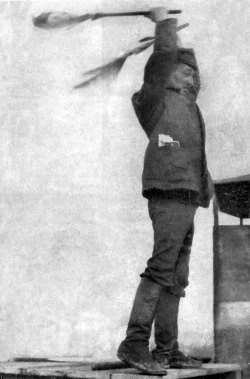
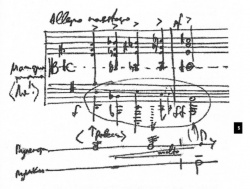


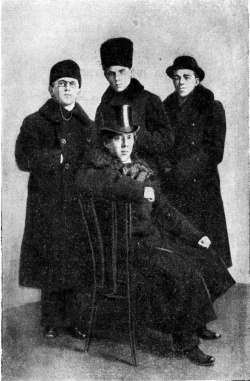

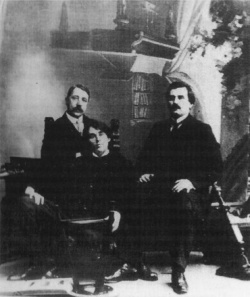


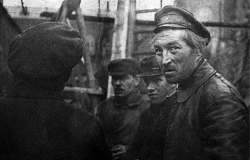
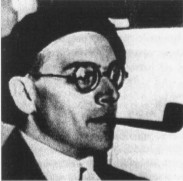



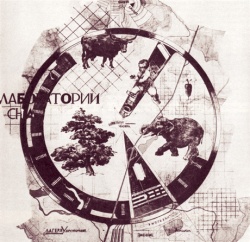
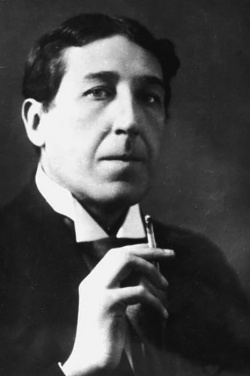

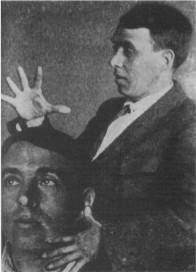

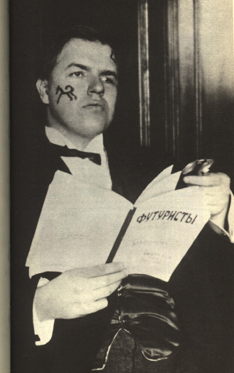
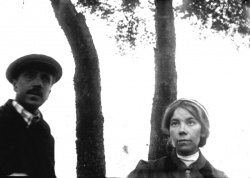

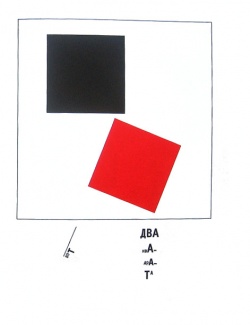
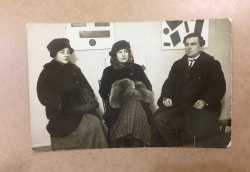
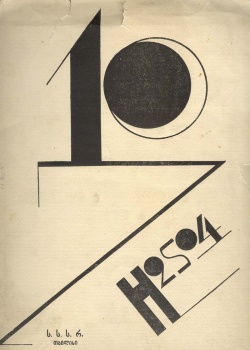
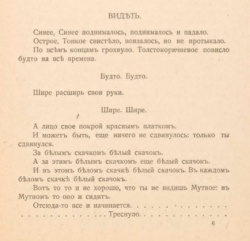
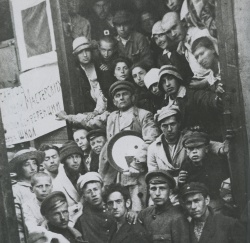
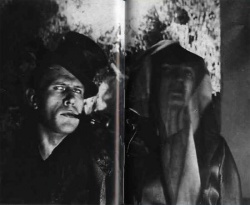
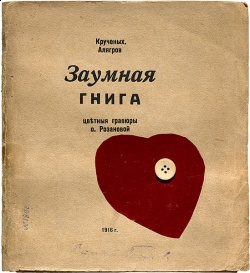
Nema komentara:
Objavi komentar